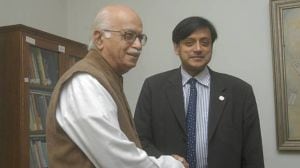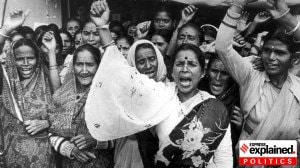Building bridges in the red corridor
In Maoist affected and communally charged Kandhamal,a BDO tries to bring governance to its residents.
His Bolero trundling on a road in the Maoist-affected Daringibadi block of Kandhamal,Manoj Swain comes across a tribal boy who has fallen from a cycle and hurt himself. The 41-year-old block development officer (BDO) of the largest block of the district,searches for a first-aid box in his official vehicle. His staff had forgotten to keep the box. As the youth writhes in pain,Swain chides his junior officials. The boy recovers soon and Swain waves him goodbye,asking him to take care.
Swain is one of the few officers in the area who is happy to be serving in the Naxal heartland. Spread over 769 sq km of area,the deep forests of Daringibadi serve as a safe haven for the Basdhara and Ghumsar divisions of the CPI(Maoist) and its leader Sabyasachi Panda,secretary of Orissa State Committee of Maoists. Daringibadi is from where Naxals get scores of recruits every year. On November 27 last year,Maoists blasted an ambulance in Poiguda area of the block at midnight,mistaking it for a police vehicle. All five people,including a three-year-old girl,who were in that ambulance died instantly. Two days earlier,Maoists had killed dead local RSS leader Manoj Sahu and in January 4 this year,they killed local businessman Uday Sahu.
When Home minister P Chidambaram spoke to district magistrates of 60 Naxal affected districts,including Kandhamal,through video-conferencing this month to gauge the impact of the Integrated Action Plan (IAP),the responsibility of implementing the plan fell to officers like Swain. Starting December 2010,the Planning Commission had allocated Rs 25 crore to each of these 60 districts with an aim to build infrastructure in these backward blocks in the short term.
Since November 1,2010,after being posted as the BDO of Daringibadi,Swain has been travelling to villages,some of which are at least 70-80 km away from his office. I come to office at 7 a.m. and soon after leave for interior villages to oversee developmental works. I am back only at 7 p.m. after which I clear the files till 11 at night. With 24 gram panchayats,I cannot afford to sit in office and hope to run the block well, says Swain,who left his job as a forest ranger for a career in the Orissa Administrative Service.
Swain has also started a grievance cell that hears peoples complaints on the 1st and 16th of every month. So,24 designated nodal officers go to each gram panchayat on these days and hold half-hourly meetings,attended by 200-300 villagers. Apart from this,each gram panchayat member has to teach every village on a given day of the week. Having assigned two gram panchayats each to 13 junior engineers (civil works) in his block,Swain is ensuring that the Pradhan Mantri Gram Sadak Yojana is on track. The NREGS,which can help the 85 per cent BPL population of his block,too is progressing well with Swain all set to spend Rs 12-13 crore on the scheme in 2010-11 as compared to Rs 7 crore last year. He has also used the influence of civil society to reach out to the tribal youths through a programme called Antaranga,which was started in the aftermath of 2008 to bring peace between Hindu and Christian youths as well as the Dalits and tribals.
Before he became a BDO,Swain was the nodal officer for the Forest Rights Act in Baliguda sub-division,where he successfully implemented the Forest Rights Act. Now we would give them money for developing their land and assistance for horticulture. If each tribal plants 160 trees on an acre of land,he would get Rs 1.6 lakh per year after five years, says Swain,underlining government effort to make the tribals self-sufficient and turn away from the Maoist movement.
The results of his administrative actions have been quite striking. At Sikarmaha village under Tajungia GP,one of the areas with increased Maoist movement,Johan Mutamajhi,a tribal,is happy that he does not need to travel to the block office. Now the anganwadi workers come on time. We have no problem in getting rice at Rs 2 per kg. We are also getting work under NREGS, says Mutamajhi.
But not all have problems have been solved. Lack of healthcare and electrification remain the areas abiding problems.



- 01
- 02
- 03
- 04
- 05




























